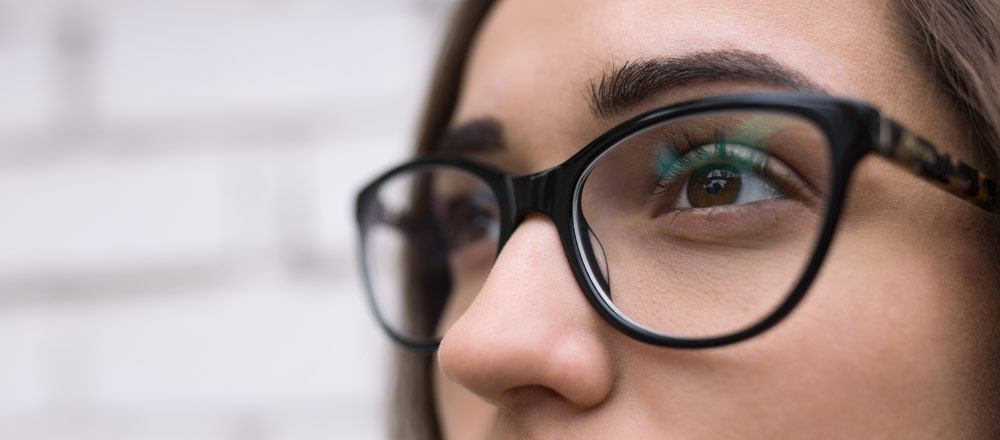LASIK, SMILE & PRK – Which is Right for Me?
Sub Title

For those looking to correct their vision with laser eye surgery, your three best options are LASIK, SMILE or PRK. All three procedures are safe and effective ways to correct your vision and result in similar visual outcomes, but which one is right for you? We’ll help you navigate some of the main differences and advantages between these three treatments.
PRK (Photorefractive Keratectomy)
The Procedure:
PRK is a laser eye surgery using surface ablation. During a PRK procedure, the outer layer (epithelium) of the cornea (the clear window in front of the eye) is removed and your cornea is then reshaped using a cool excimer laser.
The key difference between a PRK and LASIK procedure is that no flap is created during a PRK surgery, which results in a slower vision recovery. The procedure only takes about 5 minutes per eye and is a quick outpatient procedure.
Prescription Range:
PRK can treat myopia (nearsightedness), hyperopia (farsightedness), and astigmatism.
Thin Corneas, Dry Eye, and Other Issues:
PRK is suitable for those with thin corneas and reduces the risk of compromised post-surgery corneal thickness. Some doctors may also recommend PRK for those who participate in contact sports or have professions that run a risk of an eye injury (i.e. boxers). Candidates who have this type of lifestyle are more at risk for flap-related complications after a LASIK procedure, should they experience some severe contact to the eyes.
Healing and Visual Recovery:
PRK has the longest healing period out of these three laser eye surgery procedures. After a PRK Surgery, the vision will be blurry for at least the first week. If PRK is performed on both eyes on the same day, we advise you to not drive or work for one week due to the blur. In addition, many PRK patients report more visual discomfort during the healing process than a LASIK or SMILE patient. Because the epithelial surface needs time to heal after a PRK procedure, it can take several weeks to months before the best visual outcomes are experienced.
Refractive Outcome:
Refractive outcomes from PRK are essentially identical to LASIK. Once your eyes have healed, you will likely experience optimal vision and reduced or no need for glasses or contacts.
LASIK (Laser-Assisted Stromal In-situ Keratomileusis)
The Procedure:
LASIK is the most commonly performed laser vision surgery in practice today. During a LASIK procedure, your surgeon will create a small flap of corneal tissue which is then folded back so that an excimer laser can reshape your cornea and correct your vision.
Prescription Range:
LASIK can be used to treat mild to moderate myopia, hyperopia, and astigmatism.
Thin Corneas, Dry Eye, and Other Issues:
Because a corneal flap needs to be created during a LASIK procedure, a good LASIK candidate needs to have an adequate corneal thickness. Certain patients with thin corneas are unable to receive LASIK and will find themselves better candidates for SMILE or PRK. In addition, because LASIK runs a higher risk for post-operative dry eye, those that already have preoperative dry eye may not be the best candidate for LASIK and may do better with SMILE or PRK.
Healing and Visual Recovery:
LASIK has a quick healing time: the majority of patients are able to return to work, daily activities, and driving the day after their LASIK procedure. You will experience almost immediate results and your vision will begin to stabilize within a few days to a few weeks.
Refractive Outcome:
LASIK patients typically experience 20/20 vision and are able to live free from glasses or contacts.
SMILE (Small Incision Lenticule Extraction)
The Procedure:
SMILE is the newest and most recently FDA approved laser vision correction procedure. The main procedural difference between a SMILE procedure and LASIK and PRK is that an excimer laser is not used. Instead, a femtosecond laser cuts a tiny keyhole incision in a patient’s cornea where the lenticule (a small piece of corneal tissue) is then removed. This helps to reshape the cornea and improve vision thus incorporating the benefits of both LASIk and PRK.
Prescription Range:
Currently, SMILE can only correct vision for those with low to moderate levels of myopia (short-sightedness). If your prescription does not fall under this category, SMILE is not currently the best option for you.
Thin Corneas, Dry Eye, and Other Issues:
SMILE also has the advantage of being an option for those who were not good LASIK candidates due to thin corneas. Similar to PRK, no flap is created like in LASIK, which allows for more of the outer corneal layer to remain intact. Because of this, SMILE is safer than LASIK for patients that are at risk for trauma to the head or eye (i.e. boxers) because of greater corneal stability. In addition, there is evidence that SMILE is a better option for candidates predisposed to chronic dry eye, because studies show that fewer corneal nerves are cut than with a LASIK flap.
Healing and Visual Recovery:
SMILE has been performed over half a million times in the world. During its clinical trials, SMILE has exhibited fast visual recovery with minimal post-operative discomfort. The visual recovery from a SMILE procedure is almost as fast as LASIK, but much faster than a PRK procedure.
Refractive Outcome:
Like all three procedures, SMILE produces an excellent refractive outcome that rewards patients with wonderful eyesight and freedom from glasses and contacts. Studies show that visual outcomes from SMILE, LASIK, and PRK are virtually identical. There is some data that implies that SMILE may have a lower retreatment (enhancement or touch-up procedure) rate than LASIK or PRK.
Which is Right for You?
Ultimately, that question can only be determined by your laser eye surgeon. You will need to schedule a comprehensive eye exam and pre-operative consultation in order to determine which procedure is right for your unique set of needs and eye characteristics. Dr. Paul Dougherty and his team at Dougherty Laser Vision are among the nation’s most experienced laser and lens-based vision correction surgeons and are ready to help anyone on their path to better vision.

